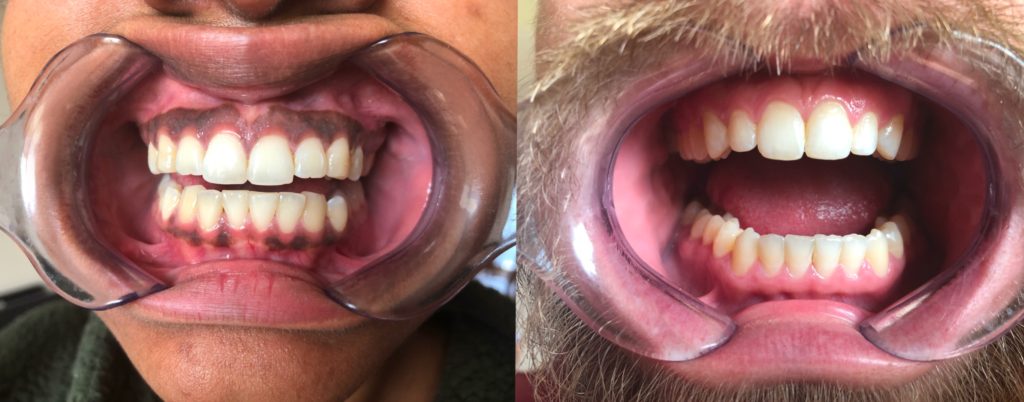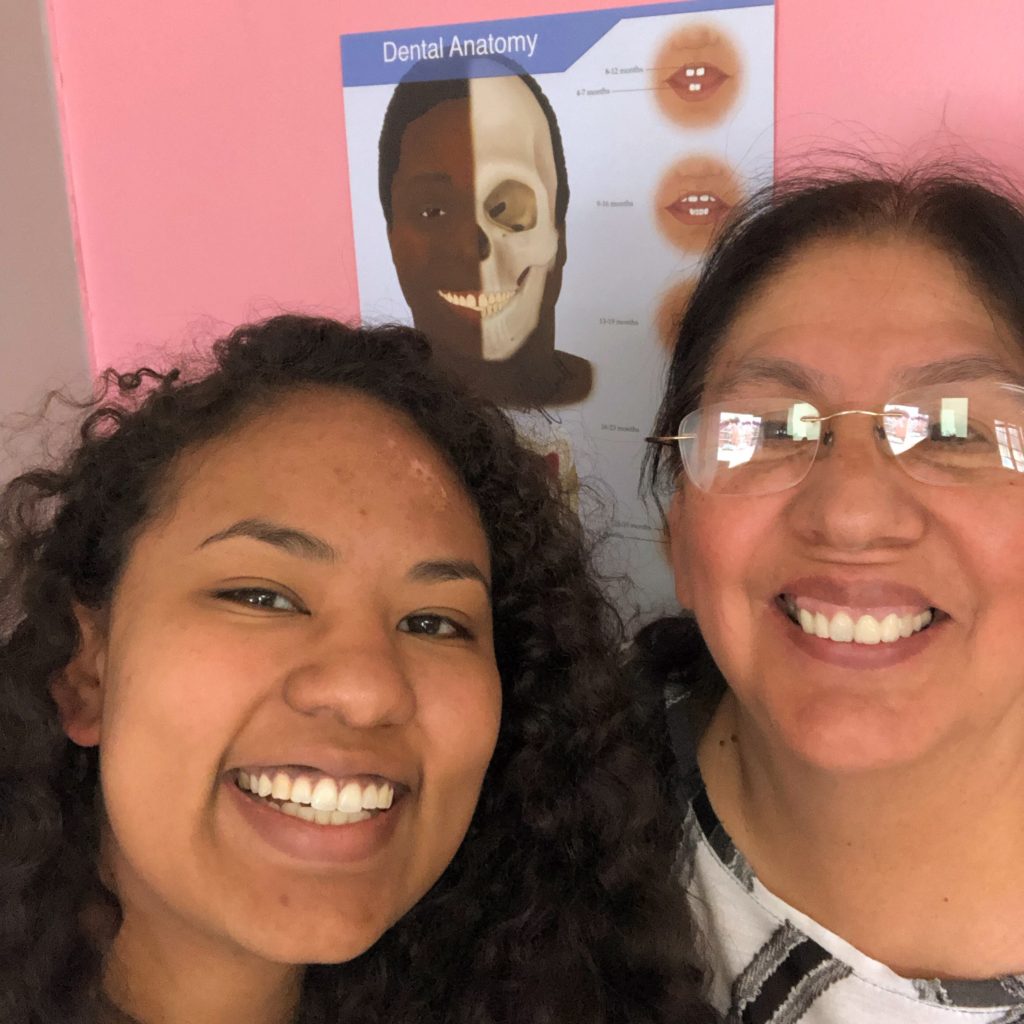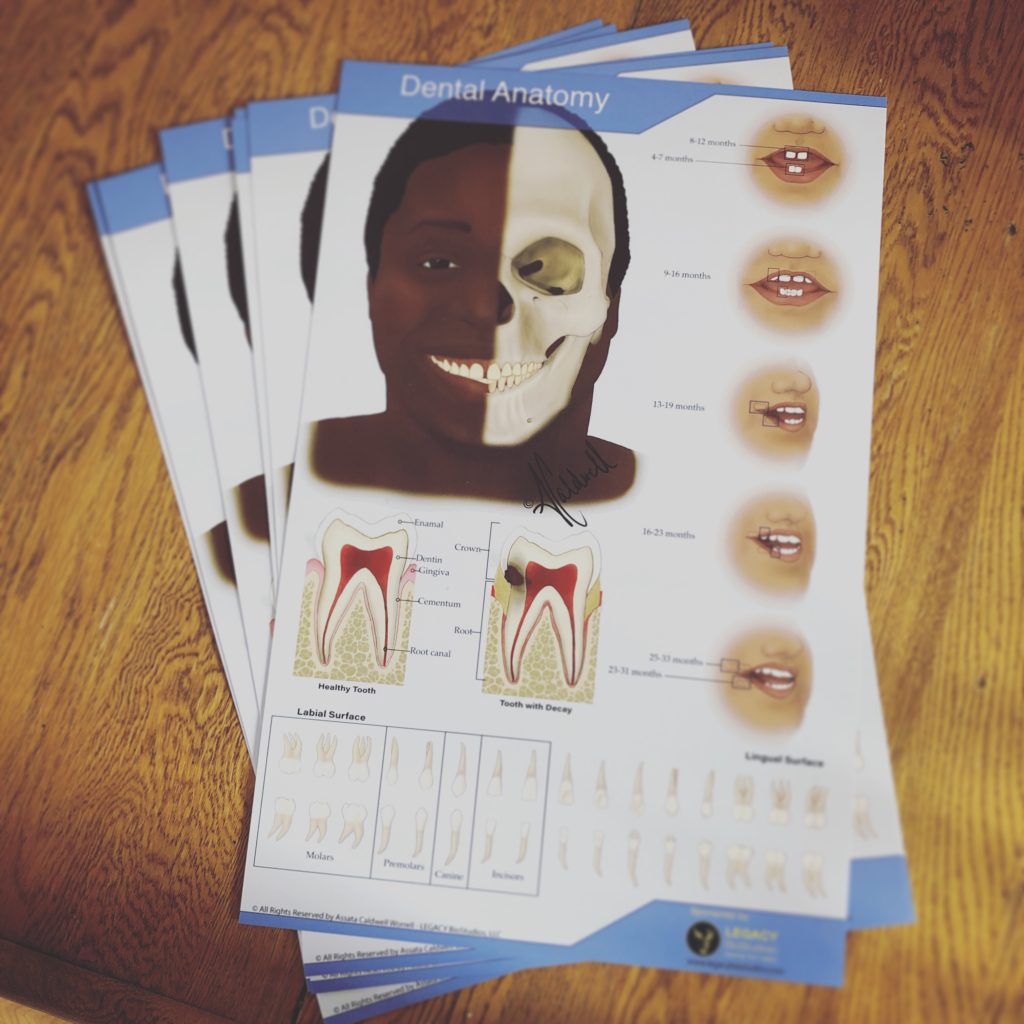Why Diversity and Inclusivity Matters in Medical Illustration
I was in the 2nd grade, and a friend told me my gums were dirty.
My mom is a dentist and was asked to come to my 2nd-grade class to do a lesson on oral hygiene and the importance of preventative health care. Mostly a “don’t be afraid of dentists” experience for kids.
While we were going over brushing, my mom handed out these pink dye tablets for us to chew and swish around after brushing to see how effective our techniques were. Of course, after chewing our tablets, we were all grinning at each other and showing our clean teeth, when one student said to me “I think you need to brush better on your gums, they are still dirty!”
I tried to brush the “dirt” off.
I went to the bathroom, brushed my gums for, what felt like an eternity, but was probably 15-20 minutes, and started to cry. I couldn’t make the darkness go away! None of my friends had this coloring on their gums, so clearly, something was wrong with me. I kept brushing and brushing, and I began to think maybe I had cancer or some other terrible ailment signified by skin discoloration.
I was embarrassed, I was scared, and I was hurt!
After an awful day, a lot of tears, and some roughed up gums, I talked to my mom. She told me that my gums were not “dirty,” but were in fact, more pigmented than my friends. I learned I have more melanin in my cells. Yes, my skin is darker because of it, but so is my mucosa! I also learned I was not alone. There were people all over the world that had darker pigmentation on their gums like me! African, Indian, Latinx, any ethnicity that commonly had more melanin in their skin had gums like mine.
I went back to school the next day and shared my new found knowledge with my friends.
I was not dirty, I was different!

I was not the “standard” of human health.
It was at this point I grew aware of the fact that all the books, posters, and brochures I saw used white-cis-men as their models. This model was the standard of health to everyone, including me, and this brought many questions to my mind during my development. It affected my health literacy, but most importantly, I felt “othered.” I became used to this feeling.
A part of my health literacy was having to “translate” my health from the health pictured on the walls of my medical providers.
I went to college, and everyone that looked like me had their own stories and experiences.
Going to college, like many 18-year-olds, exposed me to more diversity, but while meeting people from other countries was terrific, my true delight was meeting other people that looked like me. I was surrounded by people who had stories about feeling left out whether discussing beauty or health. I was not alone in my experience.
I went back home to find more diversity.
The first couple of times I went to my mom’s clinic, I noticed there were a lot of new families, and many of them were immigrants or refugees. Going to a new place is challenging, but when I spoke with the families, getting settled was even more of a challenge because they were in a whole new environment with a different majority of people, a new language, and many new customs. They were not always feeling welcomed or accepted.
My heart broke when I would overhear the children say they wanted to go home and that they didn’t belong here.
My mom started calling me to come down when new families were coming in because they saw my dark skin. She had an easier time getting the families to open up to her, and they were more open to accepting treatments with me around. I realized that I was a connecting piece to help these families find themselves in their surroundings and feel a little less secluded. While I was sitting in the office talking to the families, particularly the kids, I realized something.
I didn’t want these kids to get used to feeling excluded and have to translate their health.
I went to a conference and found the increase of immigrants and refugees were not localized. It was happening all over the state of Iowa!
Meaning all across the state were families trying to settle in an environment that wasn’t prepared to cater to their emotional need for inclusion. Dentists were not ready for the level of communication barrier. Children were not feeling adjusted and accepted.
I needed a way to have an Assata in as many clinics that were serving people of color.
I will make a poster!
Posters have a dominant position to provide decoration while also providing information, and I knew they could give empowerment and feelings of importance. I decided what media I wanted to use as my weapon of choice, but I needed to know how to use it. I needed to research the needs of those families coming in for dental work. There was a problem with diversity, but what about health literacy and dental practices in other countries?
Preventive medicine is very western.
That was the underlying theme in all the information I collected. Many kids, age nine to fifteen that were immigrants and refugees had never been to a dentist before. For many of them, the only reason they were coming to the dentist now, was their school required a dental visit before allowing enrollment. That in itself was odd to them.
These kids didn’t practice six-month check-ups, they did not know that a hurting tooth can be fixed, and they didn’t know a lot about brushing and flossing. Without a base understanding of dental care or anatomy, they didn’t know what was healthy or what needed to get checked.
Mothers that did not know about tooth development in their babies did not know what was normal or abnormal and what could be an indicator of an underlying health problem.
Overall, there was not enough information readily available for these families to feel confident to ask questions or be able to have concerns when the dentist asked.
This miscommunication leads to a lack of health care.
Simply because dentists can’t fully ask their patients questions, and patients don’t know enough to ask the questions they do have, a whole level of care is not being addressed.
I had listened and collected as much information I could, and I started creating.
I knew the human model would have to be the dominating feature, so I found a model who is of black with a Nigerian ancestry to be the face of this poster. I also knew I needed to cover basic tooth anatomy, general tooth information, and baby teeth development.
I created all my drawings digitally, painting them on Adobe Photoshop, and I began assembling the template on Adobe Illustrator.
I made sure the layout left enough room for ample annotations. Labels of dental terminology were critical to creating a base of a lexicon that would be used by the dentist during visits such as incisor, canine, root, and crown.
What was the outcome?

Currently, we are beta testing the final print.
I want to see how many patients look at it, how many use it as a
I hope this will lead to more questions, more in-depth conversation into health care options, and overall better quality of life emotionally, and physically.
I know that a poster is such a small thing in hopes of making a significant impact, but eight-year-old me would have felt that impact. Hopefully, another eight-year-old child will feel the effects now.

Want to learn more about this project? Check out our Patreon Page!
The poster is one thing, but I wanted to share the process and the background of the poster to everyone.
While the poster may be helpful, the powerful part is sharing the stories that spurred the creation process. I can’t share individual stories beyond my own. I wish I could share every families story and experience, but I can’t for the sake of their privacy. However, I can talk about my research as a whole and give you a little window into the stories I heard over the last six months with my Patreon page.
Please take a second to check it out and subscribe. Each tier of sponsorship provides different levels of information. I hope you will feel a bit of the impact I felt creating this poster, and share what you learned with your world of friends and family.

